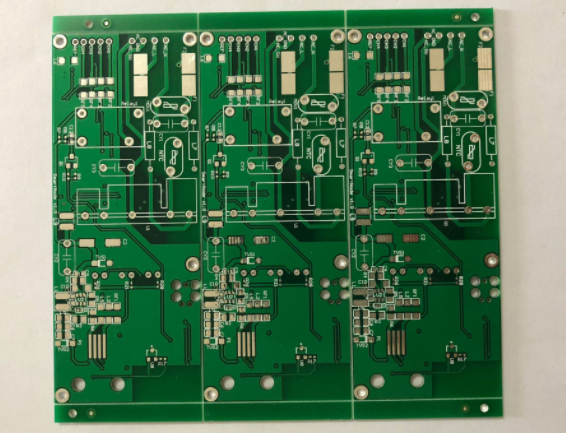Detailed SMT patch process requirements
With the continuous improvement of my country's electronic technology level, my country has become a processing plant for the world's electronics industry. Surface mount technology is an important part of advanced electronic manufacturing technology. The rapid development and popularization of SMT processing has played a unique role in promoting the development of contemporary information industry. At present, SMT has been widely used in the assembly of electronic product components and devices in various industries. Corresponding to this development status and trend of SMT, and corresponding to the technical demand for SMT brought about by the rapid development of information industry and electronic products, my country's electronic manufacturing industry urgently needs a large number of professional and technical personnel with SMT knowledge.
Process purpose
This process is to use the placement machine to accurately place the chip components on the corresponding position on the PCB surface where the solder paste or patch glue is printed.

Patch process requirements
1. Process requirements for mounting components
1. The type, model, nominal value and polarity of each assembly tag component must conform to the requirements of the product assembly drawing and schedule.
2. The mounted components must be intact.
3. The solder ends or pins of the mounted components should be immersed in solder paste not less than 1/2 thickness. For general components, the amount of solder paste extrusion (length) should be less than 0.2mm, and for narrow-pitch components, the amount of solder paste extrusion (length) should be less than 0.1mm.
4. The ends or pins of the components are aligned and centered with the land pattern. Due to the self-positioning effect during reflow soldering, the placement position of the components is allowed to have a certain deviation. The allowable deviation range requirements are as follows:
(1) Rectangular component: Under the condition that the PCB pad design is correct, the width of the component's width direction solder end width is more than 3/4 on the pad. After the component's solder end overlaps the pad in the length direction of the component, solder The protruding part of the disk should be greater than 1/3 of the height of the soldering end; when there is a rotation deviation, more than 3/4 of the width of the soldering end of the component must be on the pad. Pay special attention when mounting: the solder end of the component must be in contact with the solder paste pattern.
(2) Small outline transistor (SOT): X, Y, T (rotation angle) deviation is allowed, but the pins (including toe and heel) must all be on the pad.
(3) Small outline integrated circuit (SOIC): X, Y, T (rotation angle) are allowed to have mounting deviations, but 3/4 of the device pin width (including toe and heel) must be on the pad.
(4) Quad Flat Package Devices and Ultra Small Package Devices (QFP): Ensure that the pin width 3/4 is on the pad, and allow X, Y, T (rotation angle) to have a small mounting deviation. The toe of the pin is allowed to protrude a little from the pad, but there must be 3/4 of the length of the pin on the pad, and the heel of the pin must also be on the pad.
Two, the three elements to ensure the quality of placement
1. The components are correct. It is required that the type, model, nominal value and polarity of each assembly tag component must meet the requirements of the product assembly drawing and schedule, and cannot be pasted in the wrong position.
2. Accurate location
(1) The ends or pins of the components should be aligned and centered with the land pattern as much as possible, and the solder ends of the components should be in contact with the solder paste pattern.
(2) The component mounting position must meet the process requirements.
The self-positioning effect of the Chip components on the two ends is relatively large. During mounting, more than 1/2 to 3/4 of the width of the component is overlapped on the pad, and the two ends of the length direction only need to be overlapped with the corresponding solder. It is self-positioning when reflow soldering on the plate and touching the solder paste pattern, but if one of the ends is not connected to the pad or does not touch the solder paste pattern, displacement or suspension bridges will occur when reflow soldering.
The self-positioning effect of SOP, SOJ, QFP, PLCC and other devices is relatively small, and the placement offset cannot be corrected by reflow soldering. If the mounting position exceeds the allowable deviation range, it must be manually adjusted before entering the reflow soldering furnace for welding. Otherwise, it must be repaired after reflow soldering, which will cause waste of man-hours and materials, and even affect product reliability. In the production process, if the placement position is found to exceed the allowable deviation range, the placement coordinates should be corrected in time.
Manual placement or manual timing requires accurate placement, the pin is aligned with the pad, centered, and do not place it inaccurately. Drag and align on the solder paste to prevent the solder paste pattern from sticking and causing bridging.
3. The pressure (patch height) is appropriate. The patch pressure (Z-axis height) should be appropriate. The placement pressure is too small, the solder ends or pins of the components float on the surface of the solder paste, and the solder paste cannot stick to the components. It is prone to position shifts during transfer and reflow soldering. In addition, due to the excessive height of the Z axis, the If the component is dropped from a high place, it will cause the placement of the patch to shift; the pressure of the patch is too high, and the amount of solder paste squeezed out is too much, which is easy to cause the solder paste to stick. The position of the film is offset, and the components will be damaged in severe cases. (Explained by circuit board manufacturer)